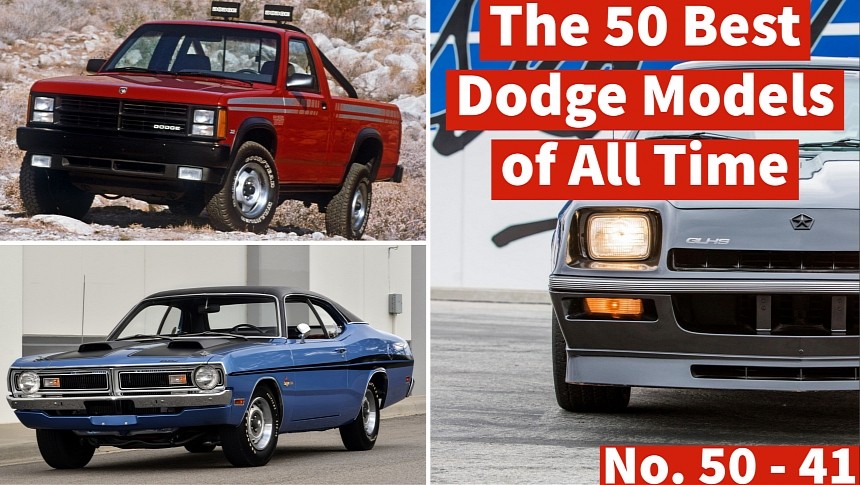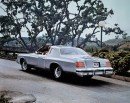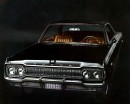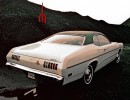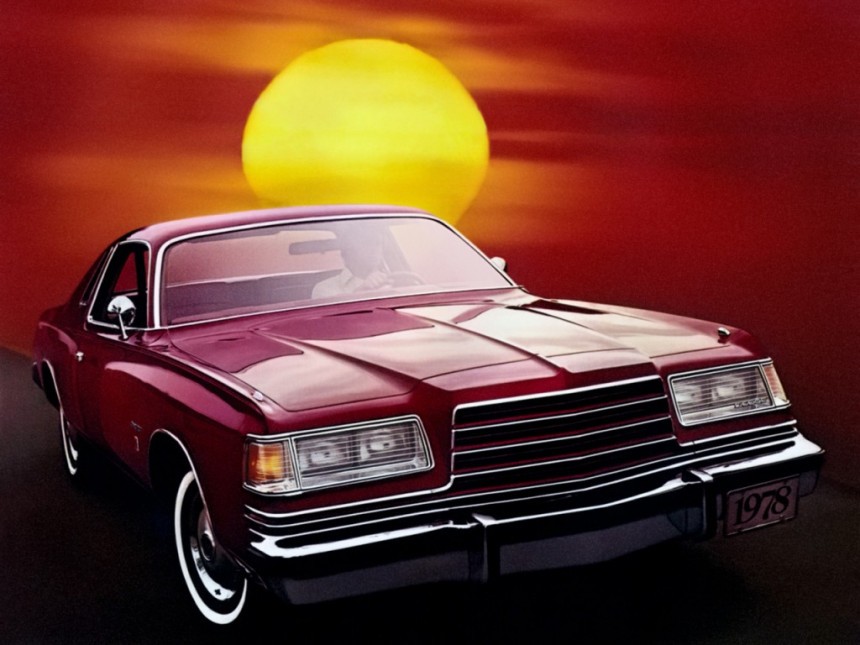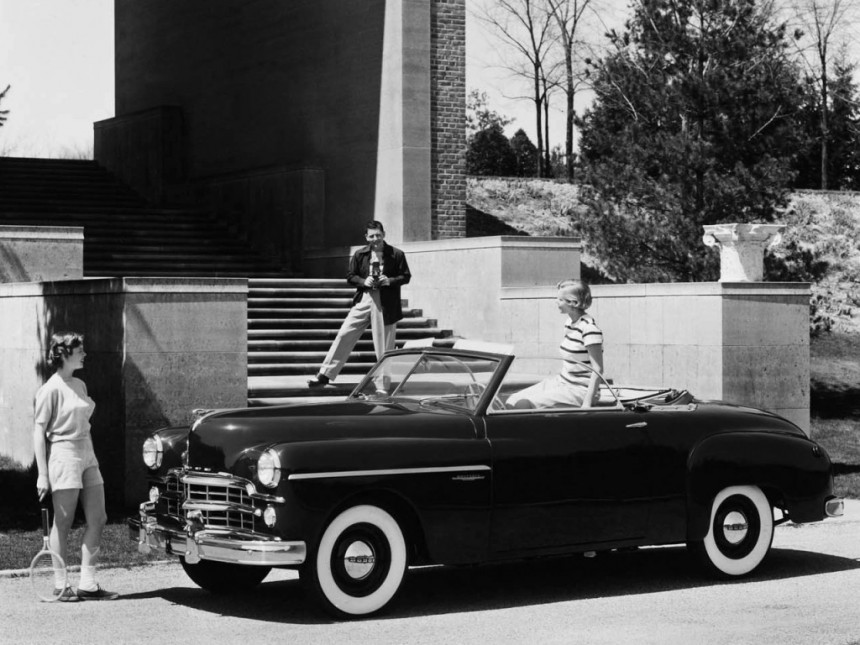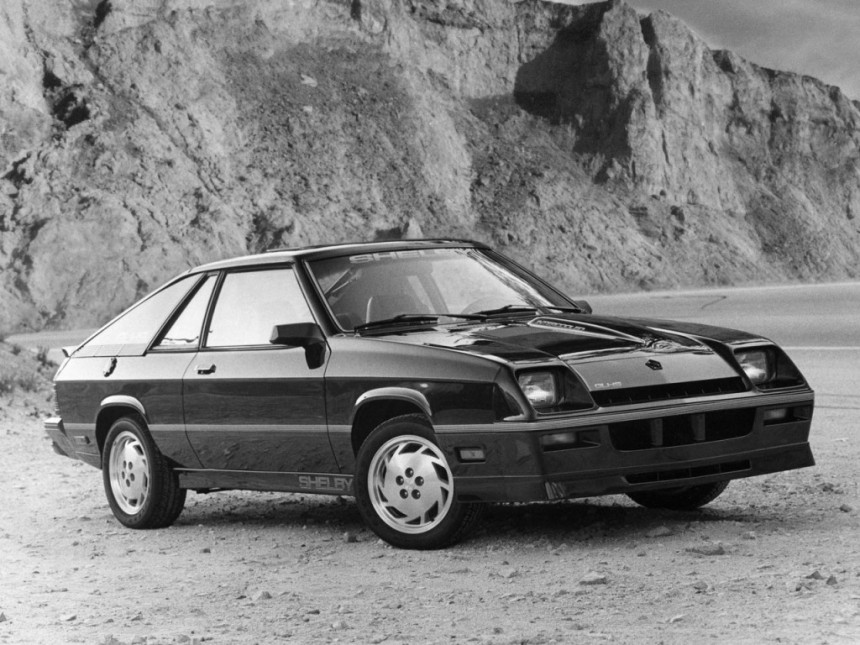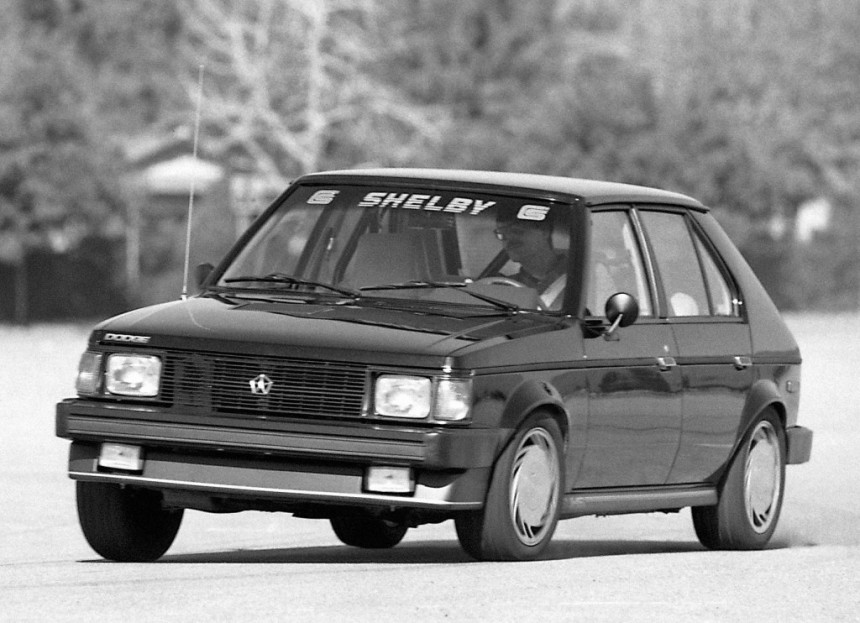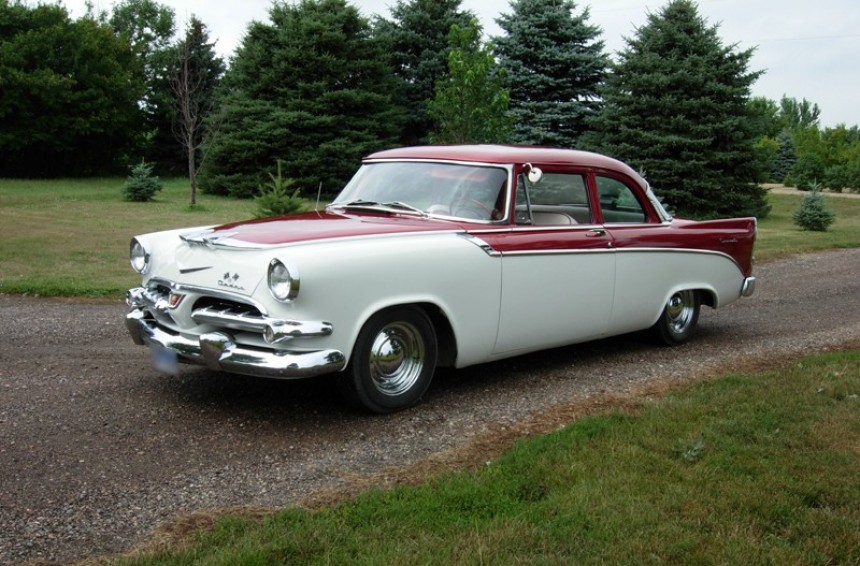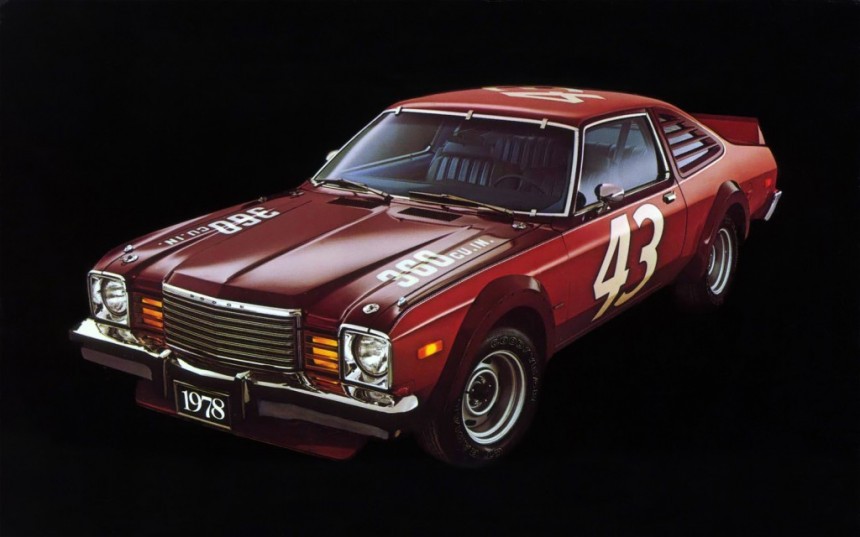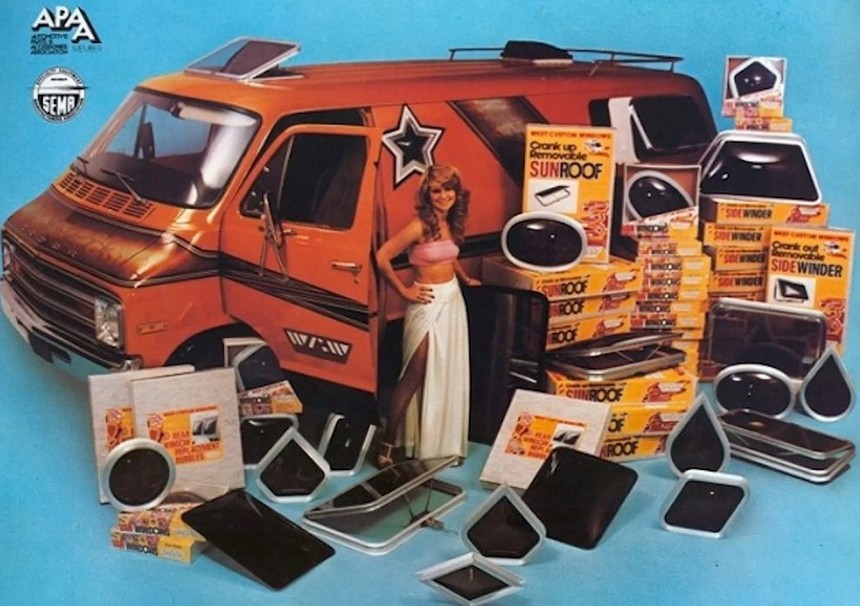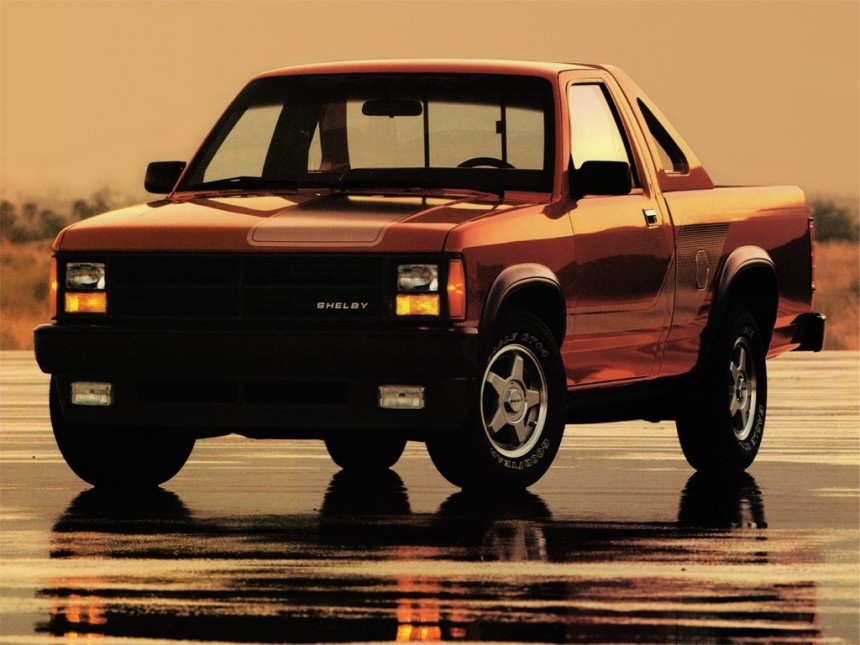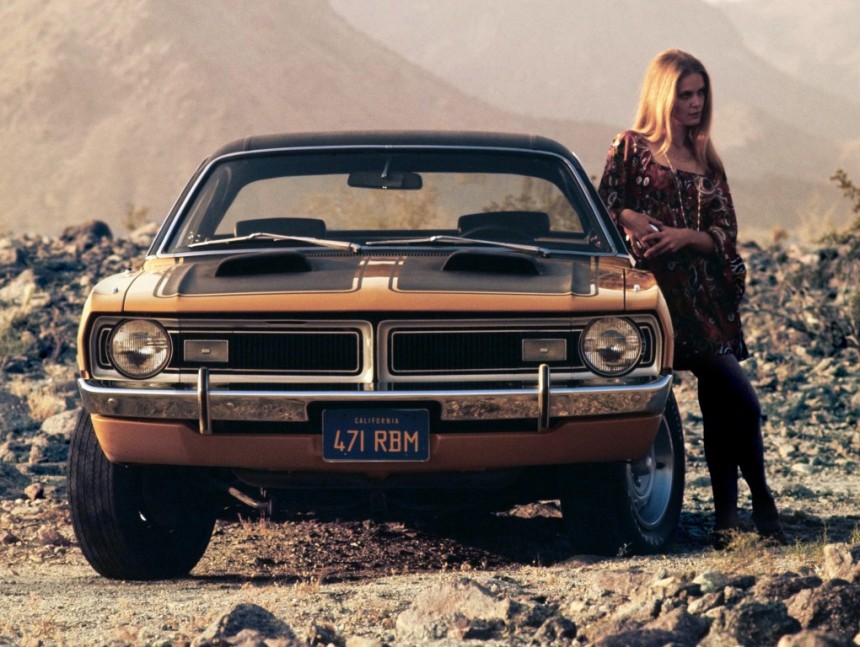Founded in 1900 as the Dodge Brothers Company, Dodge became a Chrysler division in 1928. Initially designated as a mid-priced brand above Plymouth, Dodge became a big player in the muscle car market in the 1960s.
The company is also famous for its long-running line of D-series trucks (which eventually led to the creation of the Ram division) and is credited with having kickstarted the minivan craze with the Caravan in the 1980s. It also gave us the 426-cubic-inch HEMI, one of the greatest V8 engines of all time. At the same time, its modern Dodge Challenger spawned the most powerful factory muscle car in history.
But these are only a handful of outstanding products that came from Dodge's assembly line. To celebrate one of Detroit's most significant automakers, we made a list of the 50 best Dodge models of all time. Here are numbers 50 to 41.
The "Magnum" badge is famous for adorning a station wagon built from 2005 to 2008, but Dodge started using it in 1978 on a midsize two-door coupe. Introduced as a replacement for the more iconic Charger, the first-generation Magnum was the last Mopar to use the long-running Chrysler B platform.
Much like the fourth-gen Charger that preceded it, the Magnum was sold with a couple of LA-block V8 engines and a big-block mill of the B variety. The latter, displacing 400 cubic inches (6.6 liters), was dropped at the end of 1978, leaving the Magnum with 318- and 360-cubic-inch (5.2- and 5.9-liter) options. The latter delivered 195 horsepower in the range-topping XE GT version in 1979.
While short-lived, the late-1970s Magnum was crucial in keeping the legendary Richard Petty in a Mopar on the NASCAR scene. Reasonably aerodynamic and powerful, the Magnum had a promising start in 1978, but the lack of factory development support for the 360 V8 and the car's handling issues at high speeds eventually prompted Petty to switch to GM cars. Nevertheless, he scored seven top-five finishes in his 17 races with the Magnum.
The oldest automobile in my Top 50, the Wayfarer, was Dodge's entry-level full-size two-door from 1949 to 1952, slotted below the Meadowbrook and the Coronet. Discontinued without a direct replacement, it stands out as the first true roadster built by the Big Three since the 1930s.
The Wayfarer was quite popular, with more than 200,000 units sold over four model years, but the Roadster version moved only 9,325 examples, making it a hard-to-find body style nowadays.
Offered with notable design updates in 1950 and 1951, the Wayfarer was only available with a 230-cubic-inch (3.8-liter) inline-six. Rated at 103 horsepower and 190 pound-feet (258 Nm) of torque, it pushed the heavy two-door from 0 to 60 mph (97 kph) in more than 20 seconds.
Discontinued in 1978 after four generations and 12 years on the market, the Dodge Charger returned to showrooms in late 1981. However, Dodge used the nameplate for a subcompact car this time. Available with a selection of inline-four engines (including mills sourced from Peugeot and Volkswagen), the fifth-gen Charger was a notable departure from its high-performance origins.
In 1983, however, Carroll Shelby made a deal with Dodge to create a high-performance version of the car. Called the Shelby Charger, it delivered 107 horsepower thanks to a higher compression ratio and a few other upgrades. Carroll took things up a notch in 1987 when he purchased the last 1,000 Chargers built and developed the GLH-S.
Fitted with a sporty body kit and a beefed-up, turbocharged 2.2-liter inline-four, the Charger GLH-S became the ultimate incarnation of its generation and hit the road with 175 horsepower on tap. With a 0-to-60 mph sprint of 7.3 seconds and a quarter-mile run of 14.7 clicks, it's an unsung hero of the 1980s.
The Charger wasn't the only subcompact that Dodge offered in the 1980s. The company introduced the Omni hatchback in 1977. Based on a car developed by Chrysler Europe, it shared underpinnings with the Charger that arrived in 1981.
The Omni also got Shelby's GLH treatment in 1984, with the package including a "high-output" four-cylinder rated at 110 horsepower. An optional 146-horsepower unit joined the lineup in 1985. Shelby purchased the final 500 cars one year later and introduced the Omni GLH-S.
Powered by the same unit as its Charger counterpart, the Omni version was actually quicker to 60 mph, needing less than seven seconds to hit the benchmark. And impressively enough, it was faster in the quarter-mile than some V8-powered Chevrolet Camaros, Ford Mustangs, and Pontiac Firebirds.
A lesser-known high-performance Mopar, the D-500 was produced in 1956 only as a range-topping version of the company's full-size car. It was offered on the Coronet two-door sedan and the hardtop and convertible versions of the Royal Lancer.
Produced for NASCAR homologation, the D-500 was fitted with the "Red Ram" V8, a 315-cubic-inch (5.2-liter) HEMI mill topped by dual Carter four-barrel carburetors. The engine generated 260 horsepower in the standard guise or 285 horses when ordered with the D-500-1 options.
The most powerful Dodge of the era, the D-500, is often regarded as the forerunner of the Charger Daytona. Unfortunately, not many of these cars are still around to talk about the year when Dodge won 11 stock car races and set several speed records at the Bonneville Salt Flats.
Launched in 1976 as a replacement for the Dodge Dart, the Aspen is a rather mundane Malaise-era compact for design and performance. But the limited-edition Super Coupe from 1978 stands out as a unique, NASCAR-inspired offering.
Created to honor NASCAR legend Richard Petty, the Super Coupe sported bolt-on flared fenders, louvered quarter and rear windows, metal tie-downs for the windshield, an adjustable rear spoiler, and large "43" decals on the doors. In short, it looked very much like a race car.
Additional goodies included a heavy-duty suspension, a rear sway bar, and three-color stripes. But while it looked mean, the Super Coupe wasn't more potent than the range-topping Aspen fitted with the 360-cubic-inch (5.9-liter) V8 engine. Output came in at 175 horsepower and 260 pound-feet (353 Nm) of torque.
Dodge joined the van market in 1964 with the A100, but it wasn't until 1970 that the company developed an iconic design. The first product to wear the "Ram" badge that morphed into a stand-alone truck brand, the Ram Van (also known as the B-series), arrived just in time to give the Chevy G-series and the Ford Econoline a run for their money.
The hauler soldiered on for a whopping 33 years, getting significant redesigns in 1979 and 1998. And just like its Detroit rivals, it was an integral part of the custom van craze that occurred during the mid-to-late 1970s and early 1980s. Dodge actually took things up a notch and offered a factory customization bundle called the Street Van package.
These vans were intensely advertised alongside the Li'l Red Express and Warlock pickup trucks that hit showrooms in the late 1970s. The Ram was the last van designed by Dodge, with its successors, the Sprinter and the ProMaster, being rebadged versions of Mercedes-Benz and Fiat haulers, respectively.
Introduced in 1986, the Dakota arrived a bit late to the sub-full-size truck party. Specifically, while Chevrolet had launched the S-10 in 1981, Ford jumped on the bandwagon in 1982. But the Dakota wasn't a regular compact hauler.
Its size actually placed it above the Ranger and S-10 (but below the full-size Dodge Ram, so Chrysler used the nameplate to kickstart a then-new niche. More importantly, it was the first non-full-size truck available with an optional V8.
A 5.2-liter mill of the LA variety, the engine was first offered in the Shelby Dakota in 1989, but it found its way into the regular Dakota in 1990. The same year, Dodge introduced a Club Cab two-door model with an extended cab that accommodated up to six people. The nameplate soldiered on until 2011, when it was discontinued without a direct replacement.
Initially intended to compete with the Pontiac Grand Prix in the personal luxury car market, the Monaco became Dodge's full-size car when it arrived for the 1965 model year. But unlike the 880 model that it replaced, the Monaco came with extra premium features that turned it into a competitor for the Ford LTD and the Chevrolet Caprice, which put it into Oldsmobile and Mercury territory.
The early Monaco was quite menacing to look at, especially in two-door hardtop trim. And it also had the power to back its aggressive looks, starting with a four-barrel 383-cubic-inch (6.3-liter) V8 rated at 315 horsepower. Dodge also offered a 413-cubic-inch (6.8-liter) mill good for 340 horsepower and a 426-cubic-inch (7.0-liter) powerplant that came with 365 horsepower on tap. A 440-cubic-inch (7.2-liter) Magnum V8 introduced in 1967 gave the Monaco 375 horses to play with.
While it never reached muscle car status, the Monaco is arguably one of the most important full-size cars built by Dodge. The nameplate also developed some notoriety after a 1974 squad car was featured in "The Blues Brothers" movie.
Originally a full-size car, the Dart became an intermediate in 1962 and downsized into compact duty in 1963. But that didn't stop Dodge from moving the nameplate into muscle car territory toward the late 1960s. While the mighty 426 HEMI was only offered in a limited-edition, factory-built dragster, the Dart got both the 340-cubic-inch (5.6-liter) LA and 383-cubic-inch (6.3-liter) RB mills on the options list.
The Demon arrived in 1971 as Dodge's take on the Plymouth Valiant Scamp. Essentially a Swinger with a Valiant front clip, the Demon was supposed to hit showrooms as the Beaver, but Dodge changed the name when the marketing department learned that "beaver" was CB slang for a part of the female anatomy.
While nowhere near as spectacular as the modern Demon, the Dart Demon was quite potent for the era thanks to a 340-cubic-inch V8 rated at 275 horsepower. The optional hood scoops and blacked-out hood made it popular with the muscle car crowd.
But these are only a handful of outstanding products that came from Dodge's assembly line. To celebrate one of Detroit's most significant automakers, we made a list of the 50 best Dodge models of all time. Here are numbers 50 to 41.
50. 1978 Magnum
Much like the fourth-gen Charger that preceded it, the Magnum was sold with a couple of LA-block V8 engines and a big-block mill of the B variety. The latter, displacing 400 cubic inches (6.6 liters), was dropped at the end of 1978, leaving the Magnum with 318- and 360-cubic-inch (5.2- and 5.9-liter) options. The latter delivered 195 horsepower in the range-topping XE GT version in 1979.
While short-lived, the late-1970s Magnum was crucial in keeping the legendary Richard Petty in a Mopar on the NASCAR scene. Reasonably aerodynamic and powerful, the Magnum had a promising start in 1978, but the lack of factory development support for the 360 V8 and the car's handling issues at high speeds eventually prompted Petty to switch to GM cars. Nevertheless, he scored seven top-five finishes in his 17 races with the Magnum.
49. 1949 Wayfarer
The Wayfarer was quite popular, with more than 200,000 units sold over four model years, but the Roadster version moved only 9,325 examples, making it a hard-to-find body style nowadays.
Offered with notable design updates in 1950 and 1951, the Wayfarer was only available with a 230-cubic-inch (3.8-liter) inline-six. Rated at 103 horsepower and 190 pound-feet (258 Nm) of torque, it pushed the heavy two-door from 0 to 60 mph (97 kph) in more than 20 seconds.
48. 1987 Shelby Charger GLH-S
In 1983, however, Carroll Shelby made a deal with Dodge to create a high-performance version of the car. Called the Shelby Charger, it delivered 107 horsepower thanks to a higher compression ratio and a few other upgrades. Carroll took things up a notch in 1987 when he purchased the last 1,000 Chargers built and developed the GLH-S.
Fitted with a sporty body kit and a beefed-up, turbocharged 2.2-liter inline-four, the Charger GLH-S became the ultimate incarnation of its generation and hit the road with 175 horsepower on tap. With a 0-to-60 mph sprint of 7.3 seconds and a quarter-mile run of 14.7 clicks, it's an unsung hero of the 1980s.
47. 1984 Shelby Omni GLH-S
The Omni also got Shelby's GLH treatment in 1984, with the package including a "high-output" four-cylinder rated at 110 horsepower. An optional 146-horsepower unit joined the lineup in 1985. Shelby purchased the final 500 cars one year later and introduced the Omni GLH-S.
Powered by the same unit as its Charger counterpart, the Omni version was actually quicker to 60 mph, needing less than seven seconds to hit the benchmark. And impressively enough, it was faster in the quarter-mile than some V8-powered Chevrolet Camaros, Ford Mustangs, and Pontiac Firebirds.
46. 1956 D-500
Produced for NASCAR homologation, the D-500 was fitted with the "Red Ram" V8, a 315-cubic-inch (5.2-liter) HEMI mill topped by dual Carter four-barrel carburetors. The engine generated 260 horsepower in the standard guise or 285 horses when ordered with the D-500-1 options.
The most powerful Dodge of the era, the D-500, is often regarded as the forerunner of the Charger Daytona. Unfortunately, not many of these cars are still around to talk about the year when Dodge won 11 stock car races and set several speed records at the Bonneville Salt Flats.
45. 1978 Aspen Super Coupe
Created to honor NASCAR legend Richard Petty, the Super Coupe sported bolt-on flared fenders, louvered quarter and rear windows, metal tie-downs for the windshield, an adjustable rear spoiler, and large "43" decals on the doors. In short, it looked very much like a race car.
Additional goodies included a heavy-duty suspension, a rear sway bar, and three-color stripes. But while it looked mean, the Super Coupe wasn't more potent than the range-topping Aspen fitted with the 360-cubic-inch (5.9-liter) V8 engine. Output came in at 175 horsepower and 260 pound-feet (353 Nm) of torque.
44. 1970 Ram Van
The hauler soldiered on for a whopping 33 years, getting significant redesigns in 1979 and 1998. And just like its Detroit rivals, it was an integral part of the custom van craze that occurred during the mid-to-late 1970s and early 1980s. Dodge actually took things up a notch and offered a factory customization bundle called the Street Van package.
These vans were intensely advertised alongside the Li'l Red Express and Warlock pickup trucks that hit showrooms in the late 1970s. The Ram was the last van designed by Dodge, with its successors, the Sprinter and the ProMaster, being rebadged versions of Mercedes-Benz and Fiat haulers, respectively.
43. 1990 Dakota
Its size actually placed it above the Ranger and S-10 (but below the full-size Dodge Ram, so Chrysler used the nameplate to kickstart a then-new niche. More importantly, it was the first non-full-size truck available with an optional V8.
A 5.2-liter mill of the LA variety, the engine was first offered in the Shelby Dakota in 1989, but it found its way into the regular Dakota in 1990. The same year, Dodge introduced a Club Cab two-door model with an extended cab that accommodated up to six people. The nameplate soldiered on until 2011, when it was discontinued without a direct replacement.
42. 1965 Monaco
The early Monaco was quite menacing to look at, especially in two-door hardtop trim. And it also had the power to back its aggressive looks, starting with a four-barrel 383-cubic-inch (6.3-liter) V8 rated at 315 horsepower. Dodge also offered a 413-cubic-inch (6.8-liter) mill good for 340 horsepower and a 426-cubic-inch (7.0-liter) powerplant that came with 365 horsepower on tap. A 440-cubic-inch (7.2-liter) Magnum V8 introduced in 1967 gave the Monaco 375 horses to play with.
While it never reached muscle car status, the Monaco is arguably one of the most important full-size cars built by Dodge. The nameplate also developed some notoriety after a 1974 squad car was featured in "The Blues Brothers" movie.
41. 1971 Dart Demon
The Demon arrived in 1971 as Dodge's take on the Plymouth Valiant Scamp. Essentially a Swinger with a Valiant front clip, the Demon was supposed to hit showrooms as the Beaver, but Dodge changed the name when the marketing department learned that "beaver" was CB slang for a part of the female anatomy.
While nowhere near as spectacular as the modern Demon, the Dart Demon was quite potent for the era thanks to a 340-cubic-inch V8 rated at 275 horsepower. The optional hood scoops and blacked-out hood made it popular with the muscle car crowd.
